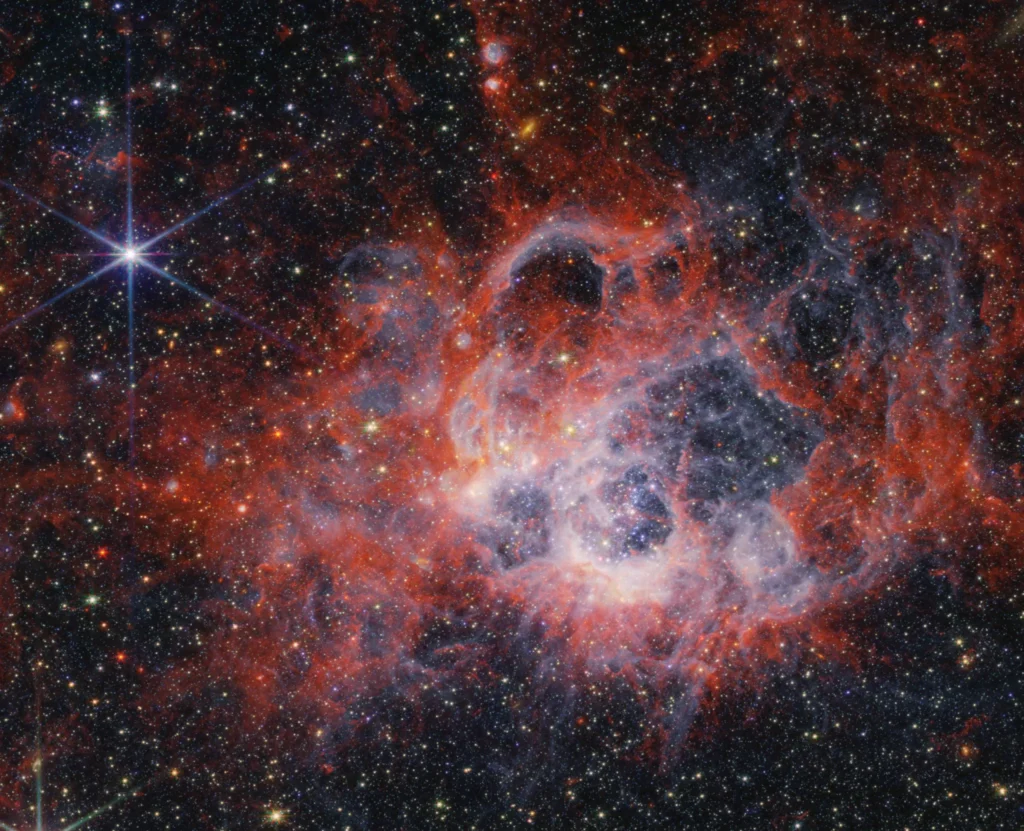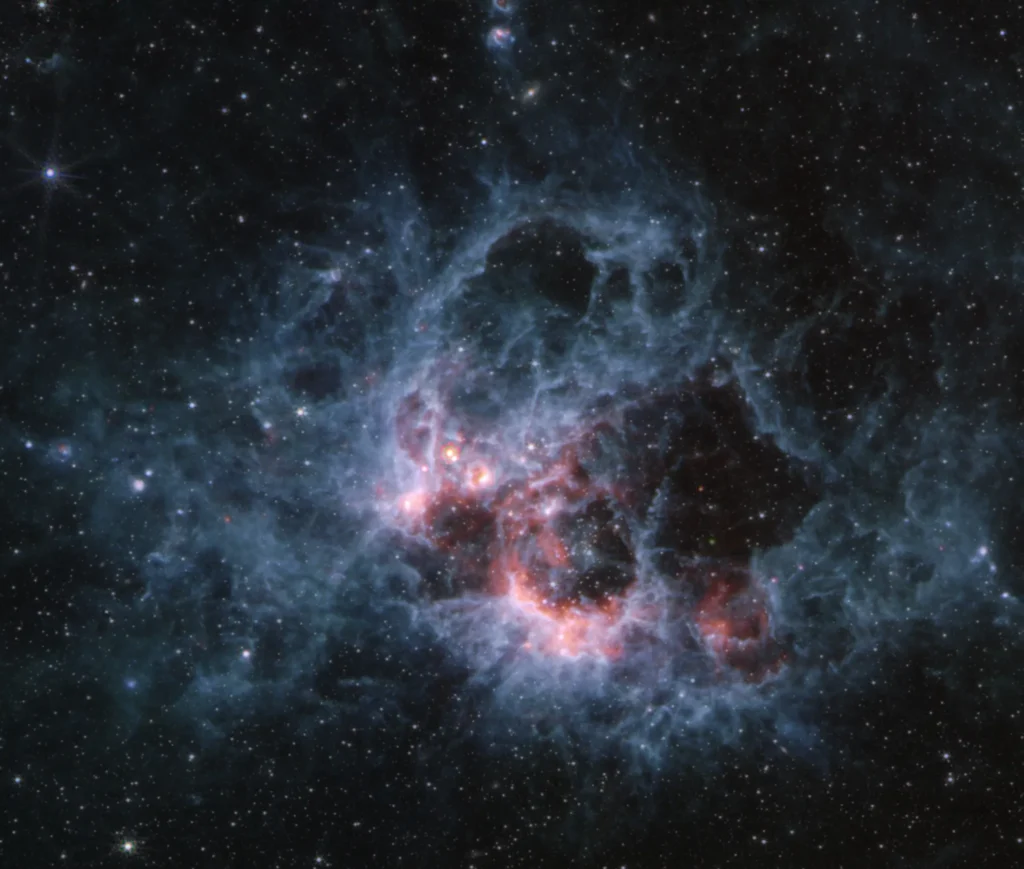Astronomers used the James Webb Space Telescope to photograph the NGC 604 nebula. This is one of the largest stellar maternity wards in the vicinity of the Milky Way.
Giant stars of the Triangulum galaxy
The NGC 604 nebula is located in the Triangulum galaxy. This is a spiral galaxy that is 2.7 million light-years away from ours. Under ideal observation conditions, it can be distinguished in the terrestrial sky. This makes it the most distant object, in theory visible to the naked eye.
Despite the fact that the Triangulum galaxy is smaller than ours, it is rich in regions of active star formation, the largest of which is the NGC 604 nebula. Its diameter is 1,500 light-years, which is more than forty times the size of the famous Orion nebula. If we continue the comparison, NGC 604 is 6300 times brighter. If it were in the place of the Orion nebula, its light would outshine Venus.
This is due to the fact that more than 200 newborn stars of spectral classes B and O are hidden inside NGC 604. These are the hottest and most massive stars in the universe. The masses of Class O stars can exceed the solar mass by more than a hundred times. There are no similar clusters in our Milky Way. Unsurprisingly, the NGC 604 nebula is of great interest to astronomers trying to uncover the secrets of star formation. For this, they used JWST.
NGC 604 in images from the James Webb Telescope
The image obtained by the NIRCam shows filaments and clumps of bright red color coming out of areas resembling lumens or large bubbles. They were “cut out” in the surrounding gas and dust clouds by stellar winds. The blue-white glow corresponds to the radiation of ionized hydrogen.

As for the bright orange stripes, they indicate the presence of organic molecules known as polycyclic aromatic hydrocarbons (PAHs). This material plays an important role in the interstellar medium and the formation of stars and planets, but its origin remains a mystery. The surrounding lumen areas of saturated red color indicate molecular hydrogen. This cooler gas is an ideal environment for star formation.
The image obtained by JWST in the mid-infrared range shows fewer stars. This is because hot stars emit much less light at these wavelengths. But we can see large clouds of colder gas and dust.

The image also shows the red supergiants of the Triangulum galaxy. These are dying stars, which are hundreds of times larger in diameter than our Sun, but which are colder than it. In addition, we can see blue tendrils of matter indicating the presence of PAHs.
According to https://science.nasa.gov
Follow us on Twitter to get the most interesting space news in time
https://twitter.comne/ust_magazine


